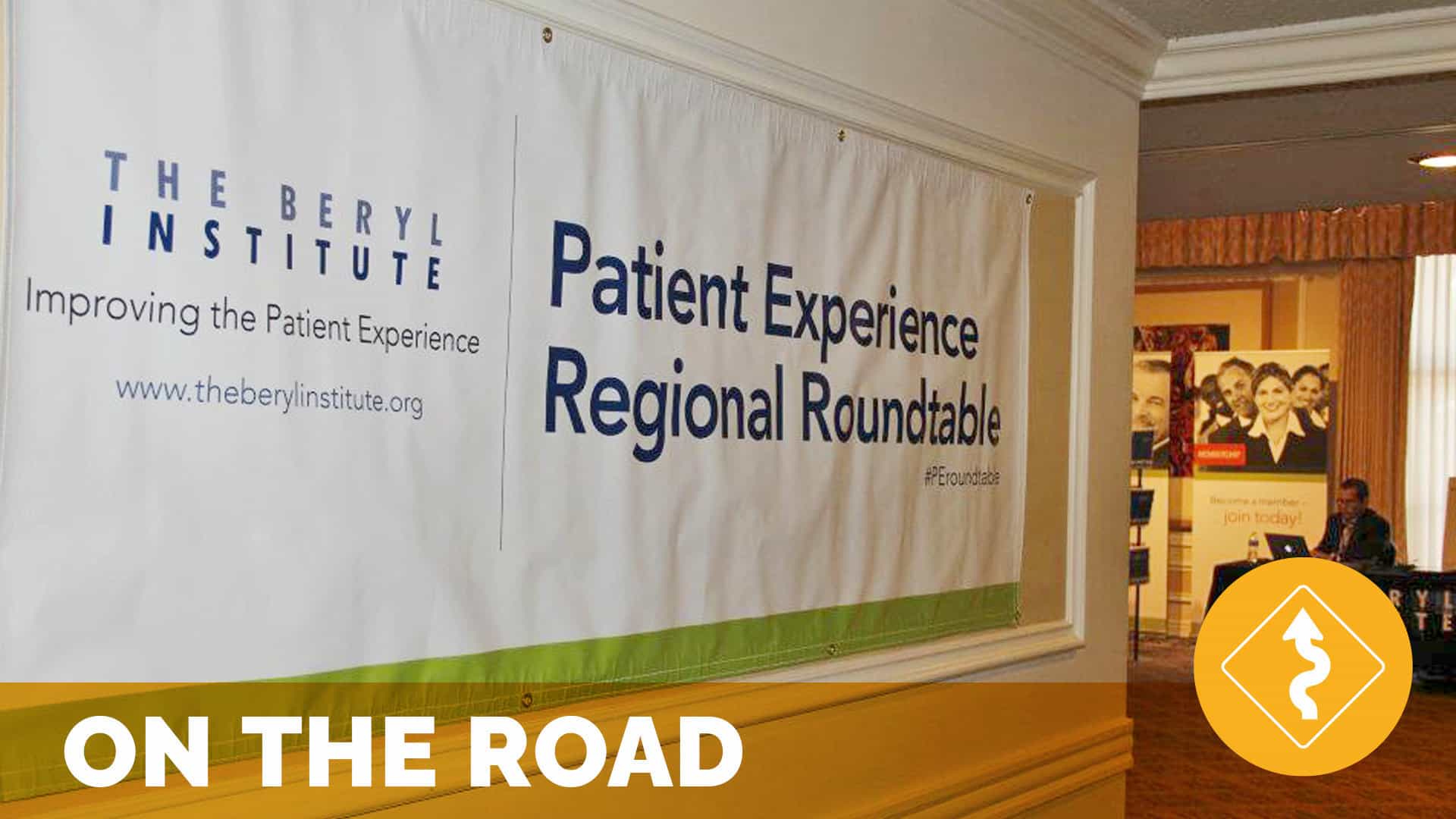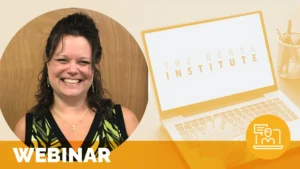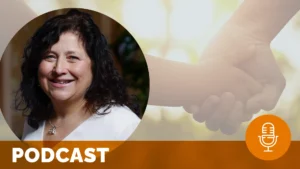Dialogues on Improving Patient Experience: Collaborating to Drive Action

On the Road at our Inaugural Regional Roundtable – November 2011
by Jason A. Wolf
The latest On the Road with The Beryl Institute takes a slightly different twist. Typically we spend time in one hospital or with a healthcare system learning about their patient experience journey in order to help others gain insight from their successes and challenges. For this issue, we want to share the stories collected and the learning gained from bringing together leaders from multiple organizations together for dialogue and learning around key patient experience issues.
On November 3, 2011, The Beryl Institute held the first-of-its-kind Regional Roundtable on the patient experience in Los Angeles, California. The roundtable, hosted by UCLA Health System, brought together healthcare executives and leaders committed to improving the patient experience for their organization, facility or system. This working event focused not only on creating valuable connections, but also engaged participants in rolling up their sleeves and developing actionable plans they could implement in addressing patient experience issues. As one attendee commented, “It was a great networking opportunity and a chance to recharge my passion.”
The one-day roundtable featured two inspiring keynotes. The first by Chip Conley, CEO of Joie de Vivre, a hotel company located in San Francisco California, who shared the keys for creating Peak experiences in the healthcare environment. Conley, was the co-author of recent Institute white paper, Creating “PEAK” Patient Experiences: Applying Maslow’s Hierarchy of Needs to Healthcare. Chip spoke to the importance of addressing customer needs, employee needs and investor (community) needs in creating a vibrant organizational and service experience and an unwavering loyalty to your organizations.
He offered many lessons including:
1. Remember the patient in your guest. Simply stated, patients not only want to be cured, they want to be treated well.
2. It is the whole picture that the patient experiences. Make sure every touch point in your continuum works in synch to provide the type of experience you expect.
3. Become obsessive about your culture. At the end of the day, it is through our culture that we can clearly differentiate ourselves as organizations.
4. Be ready to remake your business model. What new or innovative way can your bring to distinguish you from your competition.
Dr. David Feinberg, CEO of UCLA Hospital System, provided the closing keynote. His discussion on “healing humankind one patient at a time” was an inspirational model for executive leadership committed to the patient experience. The UCLA story was also featured in a recent On the Road article from the Institute. Key to Dr. Feinberg’s message was that we need to be ready in healthcare to treat our next patient as the most important one, meaning that every patient, family member or guest deserves the same care and the same service as those that came before. Excellence comes in ensuring that team members at all levels of the organization relentlessly live to this standard.
Framed by the powerful lessons shared by the keynotes, the majority of the workshop focused on interactive discussions among participants. The central purpose of the roundtable was to connect participants to facilitate the creation of actionable plans on critical patient experience issues. To this end, the attendees identified the top issues they face today in addressing the patient experience. The central areas of discussion addressed a range of important topics. The topics selected also tell the story of where patient experience efforts are focusing today.
They were:
• Strategies to improve HCAHPS scores
• Creating a culture of service
• Building a culture of accountability
• Physician Engagement
Once the topics were selected, participants split into four work groups to definine these issues and build action plans that could be used to address these top issues when they returned to their organizations. The plans were presented back to all attendees at the roundtable for discussion. The outcomes shared clearly represented both the opportunities and challenges organizations are continuing to face in improving the patient experience.
What was learned in exploring these four topics?
1. Healthcare organizations are still grappling with HCAHPS scores and their implications. While many institutions are still working to understand and address the scores from this survey, there is a recognition that it requires both effective education of staff as well as a framework for accountability to track and measure progress and success. Creating a culture of purpose versus turning HCAHPS response into a simple task is a critical choice and a key to ensuring sustainable outcomes.
2. The need for a strong service culture is a foundation of patient experience success. Culture is a core component of the patient experience. It is central to The Beryl Institute’s definition of patient experience: the sum of all interactions, shaped by an organization’s culture, that influence patient perceptions across the continuum of care. Creating a culture of service is not an overnight occurrence, but rather takes intentional effort and a structured process to achieve. While each organization will most likely move at its own pace, the key elements include establishing a steering team, framing a service vision, developing education and communication plans and monitoring progress for success. The key is to ensure staff at all levels are engaged and have a sense of ownership for the type of culture you want to create.
3. Ensuring accountability at all levels of the organization to support patient experience efforts is a work in progress. This topic addressed the ideas of both clarity of purpose and consequences for action. In ensuring accountability, key steps include setting clear expectations that are shared by all, establishing consequences for action and inaction, providing opportunities for recognition and empowering staff to act. Success in sustaining accountability hinges on consistent communication and an ongoing evaluation of resource needs and performance to expectations.
4. Engaging physicians in their role for supporting patient experience outcomes remains a challenge. In many cases physicians have a different set of expectations and incentives from their healthcare organizations and even from patients and their family regarding their impact on the patient experience. There is an opportunity to engage physicians in institutional strategy by coaching and mentoring physicians around patient experience, providing ongoing education on the issue, and giving individual feedback on the metrics such as patient surveys or HCAHPS scores. This also includes improving the recognition and reward structures for physicians who work to address patient experience overall. Here too, as with overall accountability, it comes down to setting clear expectations, providing feedback as needed, coaching for improvement and following up on performance. There is great opportunity in engaging physicians as partners in the improvement of patient experience.
While the Roundtable focused on the four topics identified by the participants, it is clear that improving the patient experience requires a broader range of actions. The opportunity to share practices that improve patient care and the overall service experience is significant, and an often overlooked means for healthcare leaders to address critical issues. A core commitment of The Beryl Institute is to provide the space for these important conversations and the sharing of ideas that will impact the patient experience overall.
This inaugural Regional Roundtable set the stage for future conversations and the tone for the type of dialogue necessary to address the patient experience. Future Roundtable events are planned for 2012. As one attendee noted, “It was an exceptional event.” A second adding, “It has been a great way to share ideas and practices in the changing (healthcare) marketplace.” Most importantly it provided the opportunity for real ideas to emerge that have been tried and tested in practice. It also offered the space for those, that by market standards might be seen as competitors, to come together for a day to collaborate in the interest of improving the patient experience. That sense of sharing ideas, be it in clinical practice and or just as importantly in our service efforts, is the essence of our work in healthcare.
Related content
-
 Culture & Leadership | Staff & Provider Engagement
Culture & Leadership | Staff & Provider EngagementA Toolbox for Work-Life Balance
Do you ever feel like you live at work? Do you have a difficult time getting in enough “ME Time” to balance work and life? In this webinar, we will consider some of our roadblocks that get in our way and identify techniques to support living a more balanced, fulfilled life. Utilizing the Fish! Philosophy
Learn more -
 Culture & Leadership | Staff & Provider Engagement
Culture & Leadership | Staff & Provider EngagementEnhancing Patient Experience: A Night Shift ER Doctor’s Passion Project
Dr. Donald Wickline of Cone Health, drawing from his experience as a night shift emergency room physician, explores the art and science of communication from a staff/provider engagement perspective. He highlights Cone Health’s C.U.R.O. communication model as a crucial framework for navigating sensitive and critical conversations with patients. This model provides physicians, including Dr. Wickline,
Learn more -
 Culture & Leadership
Culture & LeadershipBroaden the Scope of What You Consider Experience
Stacy Palmer, Senior Vice President & COO of The Beryl Institute, sits down with Pattie Cuen, Senior Vice President of Jarrard Inc., to discuss a recent consumer survey about public values in healthcare experience. Listen in as Cuen shares key insights and emphasizes the importance of seeing the bigger picture of experience by focusing on
Learn more
